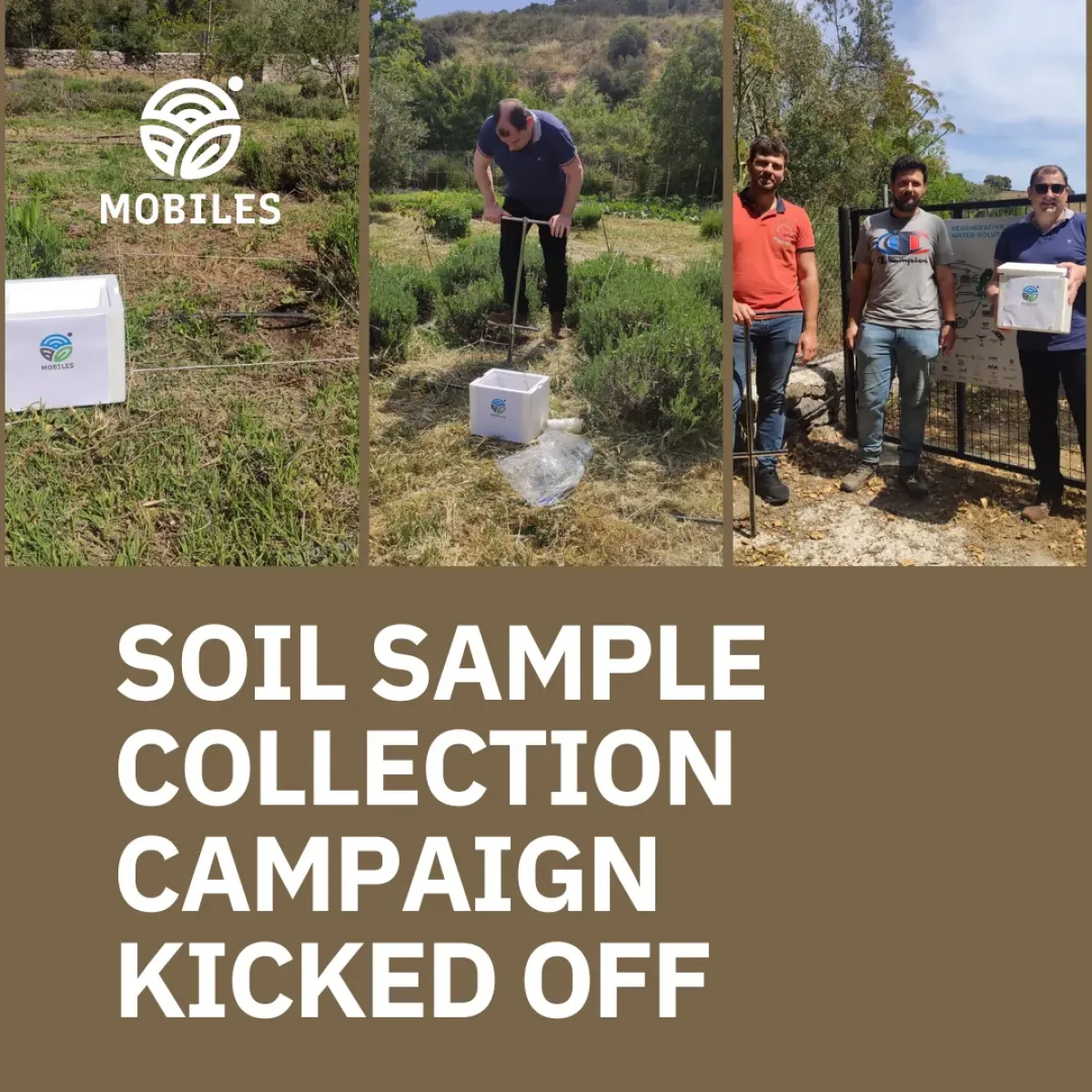
The MOBILES project is achieving a key milestone about the soil metagenomics analysis. In May 2025 the first soil sample collection campaign was launched. Partners in Greece, Cyprus, Germany, Poland, Italy and France are collecting soil samples from a variety of polluted sites. The sources of pollution are diverse, ranging from industrial contamination, and arsenic pollution to sewage water.
The NTUA Greek team successfully completed the soil collection task on May 21st. To do so, MOBILES researchers met with past (HYDROUSA) and ongoing (CARDIMED) Horizon Europe projects on the island of Lesvos. The collaboration between MOBILES and other HE projects is particularly valuable. Both projects are running experimental fields that are irrigated with treated urban wastewater. Generally, such treated water is discharged into rivers or the sea, rarely is treated sewage water used directly on soil.
The opportunity offered by HYDROUSA and CARDIMED projects is unique since NTUA team is responsible for the task of collecting soil samples exposed to treated urban wastewater. The scope of such soil analysis is to verify how treated wastewater, and in particular traces of hormones and residual antibiotics that it may contain, affect the soil microbiota- a pool of microorganisms and small invertebrates that support soil fertility and health.

Soil samples from all European sites will be send to ISSPC partner in Poland for DNA and RNA sequencing. From DNA sequencing, researchers will obtain information on the composition of soil microbiota species.
After DNA and RNA analysis is completed by project partners from ISAFOM-CNR in Italy and UPNA in Spain, the vast amount of genetic data collected will be processed using specific computer programs and made freely available for the scientific community. These tools will help identify important gene clusters and patterns that could be used in future soil protection strategies. The final step of this activity will be the storage of collected data in the database hosted on server at UPNA. The goal is to build a comprehensive database and know – how to aid in the development of new environmental policies and soil remediation practices.